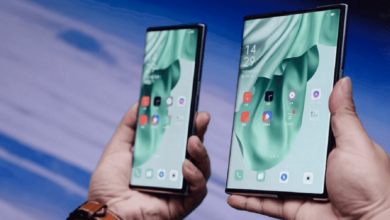Sorry, Oppo, who? Although parent company BBK is gearing up to become the world's largest smartphone maker, Oppo is still little known in some parts of the world. Find the X2 Pro Shu was impressed when he did a regular review, and now our detailed camera test is coming.
Mega-telephoto lens, mega-wide-angle, mega-megapixel: the competition for the best performance in cameras is becoming more and more insane. At the same time, more and more complex algorithms are required to cope with the sometimes chaotic camera settings. Compared to many competitors, Oppo uses a relatively simple triple camera on Find X2 Pro, but it also has its pitfalls.
Good news first: the camera in the Oppo Find X2 Pro is excellent and in many areas leaves behind even the image processing systems of more expensive competitors. In addition to evaluating image quality, of course, we set ourselves the task in this review to explain the features of the camera and unravel the manufacturer’s marketing junk.
Spoilers Native Dual ISO can change your knowledge of cameras.
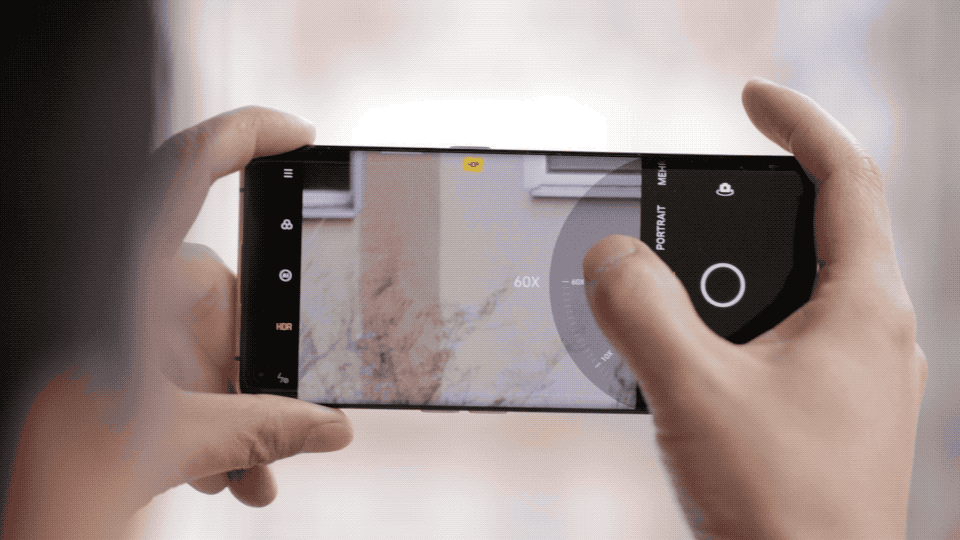
Oppo Find X2 Pro cameras at a glance
Three rear cameras, including an ultra-wide-angle, wide-angle and 5x telephoto lens, plus one selfie camera: the Oppo Find X2 Pro without tricks, such as depth sensors or 2-megapixel macro cameras, which at best help datasheets and impatient mean sellers.
Cameras in OPPO Find X2 Pro
| Ultra wide angle camera | 48 megapixel | 1 / 2 in. | F2.2 | Sony IMX586 |
| Main camera | 48 megapixel | 1 / 1,43 inch | F1.7 | Sony IMX689 |
| 5x telephoto lens | 13 megapixel | 1 / 3,44 inch | F3.0 | — |
| Selfie camera | 32 megapixels | 1 / 2,8 inch | F2.4 | Sony IMX616 |
The strengths of the Find X2 Pro are clearly expected at short focal lengths. Here you will find two large sensors that promise good image quality. A telephoto lens, on the other hand, is significantly lower along with a tiny sensor - and probably most of all this is a marketing ploy.
Main camera
The main camera in the Oppo Find X2 Pro is the Exmor IMX689. In addition to the lush surface defined by the 1 / 1,43 inch format, the Sony sensor has several excellent features. Depending on the task, the sensor uses all 48 megapixels or a quarter of the industry standard, 12 megapixels.
Switching between 48 and 12 megapixels is done manually in the camera application. By default, 12 megapixels is selected, and you can leave it as it is. The most noticeable difference is the file size, which is about three times larger when using 48 megapixels. The detail reproduction is as good as the color reproduction under good lighting conditions. Photos are vibrant but do not overload colors like some of the competitors. Absolutely no noticeable problems with color shades or the wrong white balance throughout the test period.

Automatic HDR works reliably. No problems were observed with him. In this regard, Oppo is far ahead of the competition with 108 megapixel cameras - the algorithms seem to work better. Even with half the number of pixels, the requirements are also much lower.
Another word about the camera matrix: the large real focal length of the lens, which is associated with a large format, provides a low depth of field. On the sunny side there is also a gentle optical bokeh for close-ups, which is still ahead of the background blur. However, high-contrast transitions near the focal plane tend to wear out in the form of a halo.
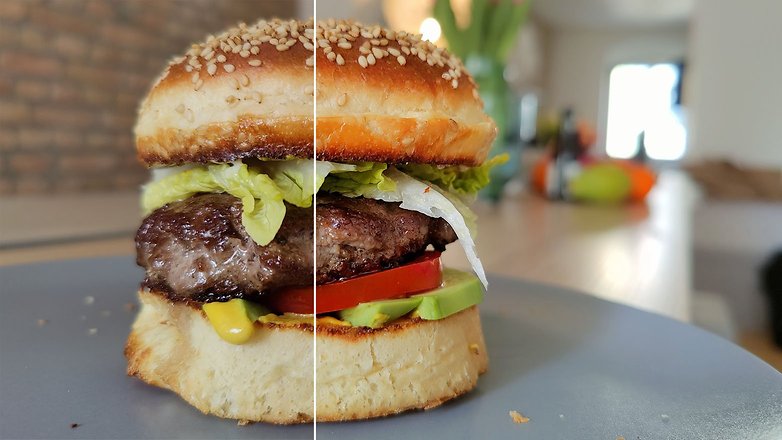
Finally, in poorly lit photos in the standard mode, Oppo Find X2 Pro relatively quickly lose detail, contrast and sharpness, and the rather lively night mode significantly improves cloudy results, but should always be activated manually. Problems with motion artifacts are rare at night, but happen with fast-moving objects.
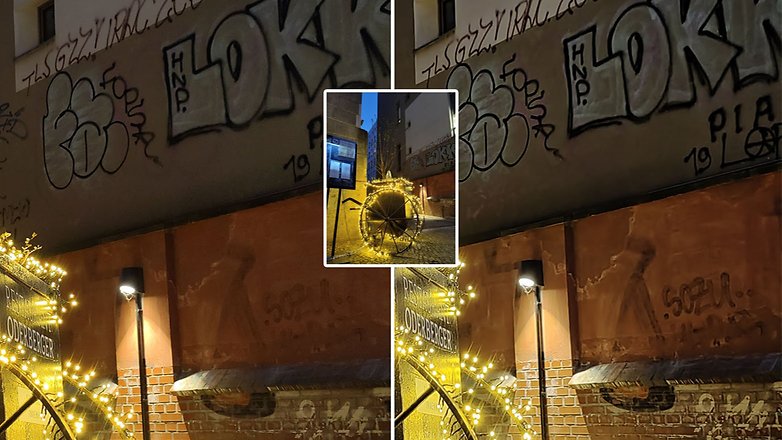
100 percent pixel focus
The previously mentioned resolution distribution is achieved by Sony Microlens Technologycalled 2 × 2 OCL, which means that a separate microlens is placed on top of each of the 48 million pixels on the sensor - although the Bayer filter itself only allows 12 megapixels. The trick with numerous micro lenses allows you to compare the phases horizontally and vertically for each pixel quartet. Thus, the sensor has autofocus to compare phases across the entire area with several million cross-sensors.

The result is impressive: in photo and video mode, the camera focuses sharper than you can see. During the test period — at least with the wide-angle camera — not a single wrong focus occurred. Autofocus works exceptionally well even in low light conditions.
For portrait photography, the Oppo Find X2 Pro is a good choice. Photos benefit from extremely fast autofocus. Oppo offers 1x and 2x magnifications, and both portrait focal lengths use the main camera. Thanks to the large sensor area and resolution reserves, this digital dual zoom is not a problem. Reproduction of skin tones is accurate.
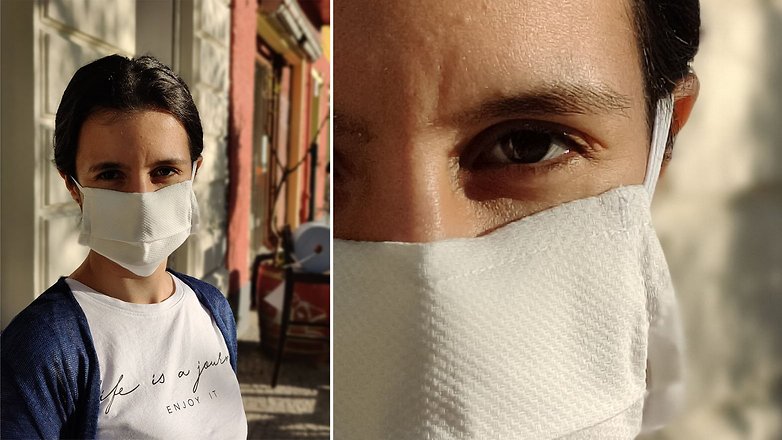
Instead of allowing the user to adjust the intensity of the required bokeh effect with a random f-stop, Oppo displays a percentage scale. The factory setting is 60 percent and provides decent, but good results, as you can see in the picture above. It is a pity, however, that the intensity of the bokeh effect cannot be adjusted later.
12 bit recording
Finally, Oppo is proud to present Find X2 Pro as the first smartphone to support 12-bit recording. This color depth describes how many shades of brightness each individual color channel can distinguish. With 8 bits specified for JPEG, this is 2⁸, i.e. 256 options: 10 bits correspond to 1024 and 12 bits correspond to 4096 brightness levels.
If the brightness levels end either when the image is processed by a person or using an algorithm, the so-called strip effects can be seen with subtle color gradients, i.e. a clear distinction between individual colors. In practice, this problem arises mainly with very subtle color gradients, for example, with a blue sky. However, when you encounter the striping effects on modern smartphones, this is more of an algorithm than a problem of the color depth of the sensor - for example, Xiaomi Mi Note 10 often drew incomprehensible borders.
In this test, comparing photos in RAW with Xiaomi Mi Note 10 (Samsung Isocell Bright GW1) and Oppo Find X2 Pro (Sony Exmor IMX689). With the same exposure, identical to RAW processing and the same extremely destructive contrast settings between the two smartphones, there is no significant difference.
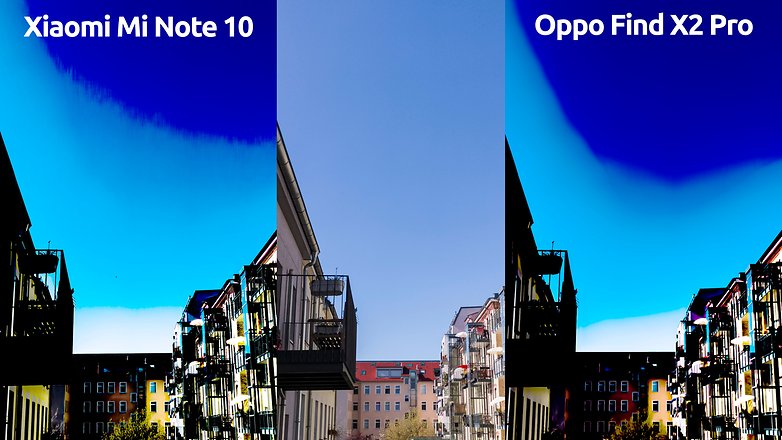
Dual native ISO
Finally, but not least, the “double native ISO sensitivity” will have a good chance of becoming the next donkey managed by marketing departments around the world - if only it wasn’t as difficult to explain as amazingly as a gigantic number of megapixels. But the function itself has its own justification and is not mistakenly found in high-quality cameras.
Simply put, the dual native ISO sensitivity gives the user or camera the ability to capture extremely bright and dark areas of the image with greater flexibility and better detail. However, people and algorithms should also be able to take advantage of opportunities.
Typically, the higher the ISO value, the more detail is reproduced in bright areas of the image. The reason for this is that amplification of the signal gain during image processing shifts the position of the gray dot in the dynamic range down. If the dual ISO camera now switches from lower to higher native ISO sensitivity, there should be a sharp loss of detail in bright areas of the image when the gray dot rises in the dynamic range.
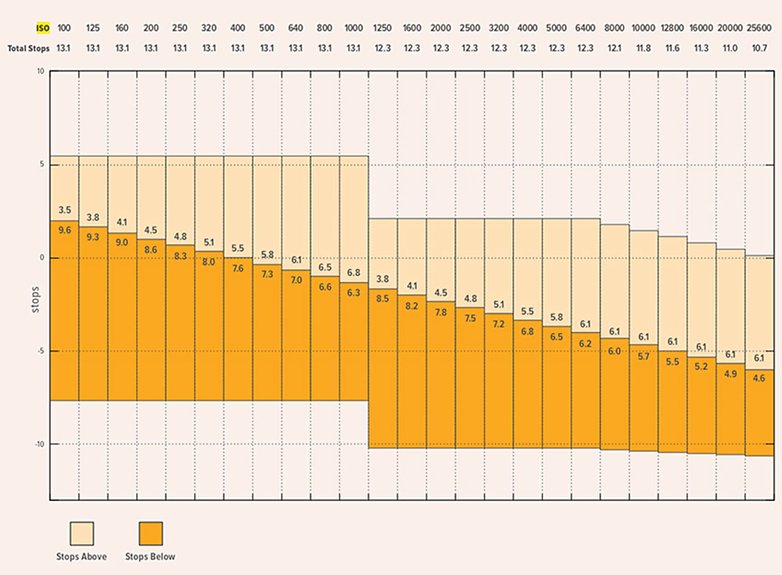
Unfortunately, it did not work to provoke this phenomenon in the test. But it is possible that in manual mode there is no access to ISO sensitivity. However, we are still on the path of double sensitivity - we are likely to see more and more of this in the coming months. As stated at the beginning: at the end of this camera test, you will find a more detailed digression from ISO and Dual Native ISO.
Ultra wide angle camera
Forget about panoramic cameras with a small sensor, with which LG launched an ultra-wide-angle trend in smartphones a few years ago. Find X2 Pro has a 48-megapixel 1/2 inch sensor with Sony IMX586. Recall that the chip was still the main camera in the Honor View 20, which was introduced in 2019.
However, the Oppo Find X2 Pro does not reach 120 degree viewing angle, which is advertised by the manufacturer. With a framing factor of 5,41 on the IMX586 and a focal length of 3,05 millimeters in accordance with EXIF, we get an estimated focal length equivalent to 16,5 millimeters - or 105,3 degrees. And a direct comparison with ultra wide-angle photos from the Samsung Galaxy S20 Ultra also shows that Samsung has a wider angle.
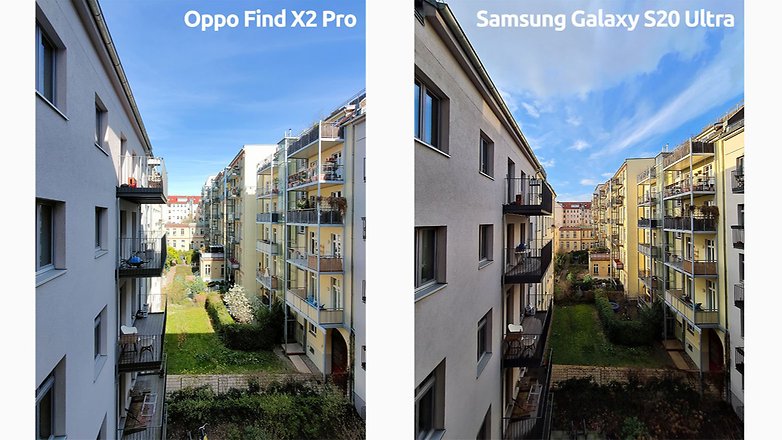
The bottom line is that the broad perspective, combined with the technical background, is still fun. As in the case with the main camera, the color rendering in daylight is very successful. The dynamic range is less noticeable. Most likely, glare will be blurred. In addition, the colors look a little more saturated. The images of the two modules are similar enough that the results of Oppo Find X2 Pro look as if they were obtained from the same source.

The relatively large sensor also performs better than average in poor lighting conditions. Dark areas of the image slowly create noise. But the colors remain mostly stable, and the detail remains good. In direct comparison with the main camera, blur is visible only in the presence of small textures.

Last but not least, the ultra-wide-angle camera module functions as a macro camera. However, the practical implementation of macro mode is a little confusing. If you come closer and closer to the object, the application automatically switches to an ultra-wide-angle module from a distance of about ten centimeters, which significantly changes the viewing angle at such a short distance.
Telephoto lens
While ultra-wide-angle and wide-angle cameras have large sensors, a tiny sensor is located behind the periscope of the telephoto lens. A small 1 / 3,44-inch chip provides less than half the area of the incident light compared to the Sony IMX586 in the ultra-wide-angle module. Recall that Samsung uses the same IMX586 for the S20 Ultra telephoto lens.
Although Oppo does not highlight the focal length and only speaks of a 10x hybrid zoom, the focal length can be roughly calculated. The cropping ratio of the small 1 / 3,44 inch sensor is about 8,25. Multiplied by the actual focal length of 15 millimeters from EXIF data, this gives 35 mm equivalent focal length for the periscope camera 123,75 millimeters. Compared to the main camera with a focal length of about 25 millimeters, this corresponds to a five-fold optical zoom, the rest - digital zoom.
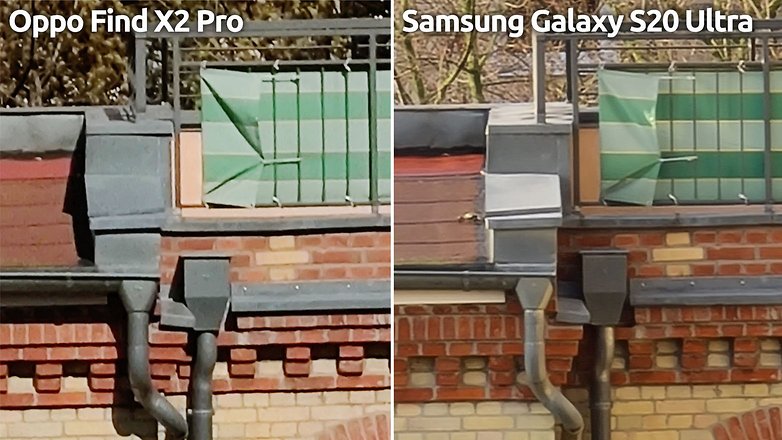
Under good lighting conditions, the telephoto lens delivers acceptable images with a viewing angle that, until recently, was unthinkable for smartphones. Heard by fans of the Galaxy S4 Zoom & Co., but let's face it: telephoto lenses for smartphones have only been on the mainstream for about a year. In any case, images in clear weather with the Find X2 Pro look usable when viewed in a smaller format and should still look good even in small format prints.

In low light conditions, the quality of the telephoto lens drops, as expected. Photos become so slushy that Find X2 Pro decides to take an unusual step below a certain brightness. Instead of using a telephoto lens, the smartphone takes pictures with the main sensor and zooms in digitally. As expected, the results are very poor. In any case, the image quality greatly benefits from the night mode, which I would also like to activate manually.
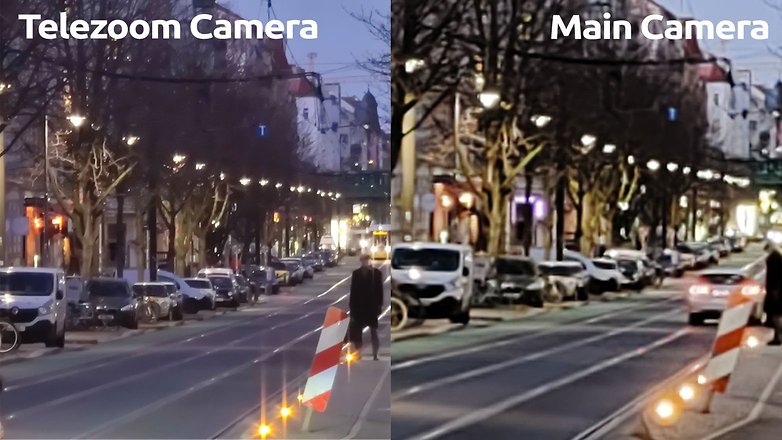
Sometimes switching between the main camera and a telephoto lens also happens with the same object. A telephoto lens may not be very good, but switching to a 48-megapixel microcircuit worsens the result. EXIF data shows which sensor uses Find X2 Pro.

Selfie camera
The front camera compresses many pixels into a small space: 32 megapixels are squeezed into a 1 / 2,8-inch sensor. Although the Sony IMX616 is also a sensor with a Quad-Bayer filter, Oppo delivers all 32 megapixels - instead of 8 megapixels in blocks.
In good lighting conditions, selfies are usually beautiful and colorful, but noise is amplified even in daylight. Accordingly, the level of detail is not as good as the resolution might promise.

Image noise increases rapidly in low light conditions, but the quality is satisfactory for ordinary selfie places such as Instagram, Facebook and Co. If you have big plans with photos, you should use one of the cameras on the back of the smartphone.
Conclusion
The Oppo Find X2 Pro has a camera that is good enough in its price range, and it's really good long-distance entertainment, not least due to its excellent autofocus system. Photos taken with two wide-angle cameras are excellent and look as if they are one.
However, there are two small points. Firstly, somewhat volatile behavior when exceeding the limits by a close-up of a telephoto lens and a wide-angle camera is annoying. And secondly, the telephoto lens is so weak that it is sometimes simply replaced by the main sensor. Unfortunately, camera behavior here is not always convincing.
But if you shoot mostly with two wide-angle modules and don't expect too much from the zoom, in Oppo Find X2 you will find one of the best camera systems on the market at the moment.
Digression: ISO sensitivity and dual genus ISO.
Let's start with ISO - or sensitivity. The individual silicon crystal pixels on each image sensor initially provide an analog signal when exposed, the voltage of which depends on the amount of light. This signal now passes first through an analog amplifier. The native sensitivity of the sensor depends on the pixels and the gain of this hardware amplifier.
Then the signal passes through an analog-to-digital converter and, if desired, is interrupted in the processes of digital image processing of computer photographs. Sensitivity adjustments beyond the analog-to-digital conversion now only shift the so-called gain, but do not change the sensitivity of the sensor itself. As a result, even for professionals in the field of cameras, little is intuitive about image quality at various ISO values.

For example, the Blackmagic Pocket Cinema 4K has two different characteristics. Above ISO 1000, the camera switches from low to high. The diagram provided by the manufacturer clearly shows that setting the ISO values does not shift the dynamic range, but only a gray dot (the transition between pale and dark yellow), which redistributes image information, while maintaining a constant dynamic range.
As can be seen from the above diagram, an additional second sensitivity, achieved by an additional analog gain loop in the sensor in front of the analog-to-digital converter, expands the scope of the cameras. However, as in the case of professional cameras with two ISOs, the same applies to image processing in a smartphone: you must know how to use the technical capabilities.
Example: ISO 1000 is better suited for Blackmagic Pocket Cinema 4K for displaying objects with many vivid details - in a brighter spectrum above the 18 percent neutral gray dot, much more information is simply available. As a result, detail reproduction for vivid details is much better at ISO 1000 with a brightness range of 5,3 versus 2,0 than at ISO 100. On the other hand, ISO 100 is much better for shooting night scenes or discreet materials that are more relevant to stage work on the set.
What we usually understand as ISO sensitivity comes from a somewhat far-fetched comparison with analog photography, which nevertheless loses more and more of its essence - and will be as obsolete as the Tesla Model 3 suffocating in the era of computer photography.


